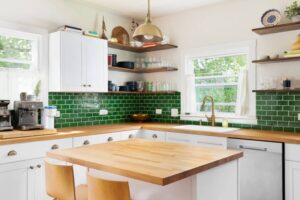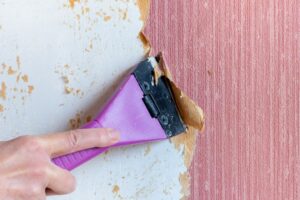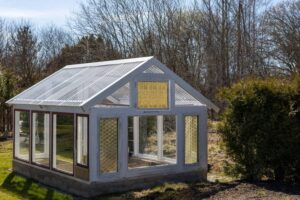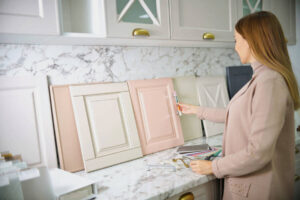Since a wall full of cabinets makes up around a quarter of many kitchens, new cabinets also hold the power to set the style of the space. With many options for kitchen cabinet door styles, such as traditional, arched, flat-panel, and Shaker, homeowners can personalize their kitchens.
It’s true that installing cabinets in a petite kitchen of 70 square feet could add up to $1,700 to $11,000, and we can only assume that those for a larger one could end up costing more than $26,000. The wide variation in kitchen cabinet cost mainly depends on the chosen profile, materials, and finish.
But since we have so many styles of kitchen cabinets available at a wide range of prices, it’s fairly important to do the much-needed research and figure out exactly what cabinets can fit your budget and blend in with the overall aesthetic.
To no one’s surprise, big-ticket purchases such as cabinetry deserve some research. In fact, a recent study from the Home Improvement Research Institute shows that over half of kitchen and bath products shoppers invest some time in research before buying anything, and the majority of those people consult more than one choice.
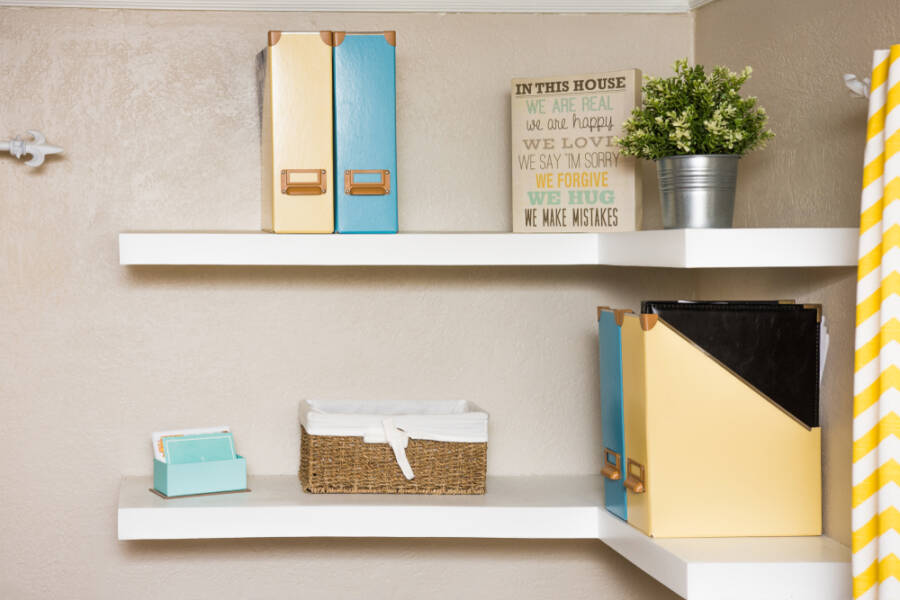
Parts of a kitchen cabinet door
All kitchen cabinet doors share the same basic elements. Even if more traditional styles of cabinets could have more components than modern styles, it’s still important to know the names of various parts so you can efficiently explain what you desire for your kitchen remodeling project. Framed cabinets have a face frame with doors that are inset, somehow overlay, or even full overlay. Frameless cabinets also have full-overlay doors, oftentimes with hinges inside the cabinet. The arrangement works like this:
- panel: center position, with a flat slab, of the cabinet door;
- rails: those horizontal elements on the top and bottom of a cabinet door’s center panel;
- stiles: the vertical elements on either side of a cabinet door’s center panel;
- carcass: the cabinet box; cabinet doors attach to the carcass through the hinges;
- framing bead: part of a traditional cabinet style, the raised bead between the stile and the center panel of the door;
- framing edge: the outside edge of the cabinet door;
- Joints: the connections between the cabinet door elements; the common joints are tongue-and-groove, pocket, dado, and mortise-and-tenon.
Modern kitchen cabinets
The kitchen cabinet’s origins go all the way back into the Middle Ages, but nowadays kitchens are filled with all kinds of modern interpretations of traditional handcrafted cabinetry. The vast majority of modern cabinetry styles are quite modest in their detailing, without curves or other complicated shadow lines.
Modern finishes range from matte to gloss, and hardware is quite simple, too. They’re mainly made from materials like solid wood, melamine, MDF, and metal, some of the nowadays popular styles including Shaker, Mission, flat-panel, and contemporary. Glass fronts are also quite nicely incorporated into modern kitchen cabinet installations.
Shaker
Shaker cabinets have been the most popular style for many years now, and moving forward, they are bound to remain quite a strong choice. With its super clean lines, flat-paneled fronts, and wide-framed doors, nowadays Shaker-style kitchen cabinets are still true to the honest simplicity of its 18th-century Shaker origins.
The plain design is also super easy to keep clean, more so than other ornate styles. Also known as a “5-piece” for its five components (meaning front panel, rails, and stiles), and nicely painted in neutral colors such as cream or stained in wood tones, Shaker-style kitchen cabinets fit quite well with many home styles, all the way from traditional to modern farmhouse.
Funnily enough, out of all the cabinet types, this might be one of the easiest styles, especially for an experienced DIYer. We strongly advise trying to recreate this kitchen cabinet door style at least once before trying to undertake an entire kitchen redo.
Mission
With its origins in the late 19th century, Mission-style furniture and cabinets are known to have these clean lines with the simplest, most modest construction. Even if it’s rooted in the past, the style’s flat fronts and austere aesthetic beautifully blend in with contemporary styling, giving the door fronts quite a timeless appeal that works great with modern farmhouse and minimalist interiors.
And due to this understated appearance, this particular style of cabinetry also works with traditional or even transitional spaces, when the cabinets can come either painted in neutral colors or even stained to let natural wood grain shine through.
Mission-style kitchen cabinets come with a few practical advantages, too. For instance, the lack of detailing generally makes them much easier to clean, especially compared to raised-panel cabinet doors.
Moreover, the style has an ongoing popularity, which means there are usually enough off-the-shelf or semi-custom options at home improvement centers to fully satisfy most homeowners’ preferences.
Flat-panel or slab
At times referred to as “slab,” the flat-panel door style comes with a clean look, suitable for a variety of kitchen designs. In wood tones, it nicely complements a traditional look, but it also takes on a modern aesthetic, especially when painted in bold colors.
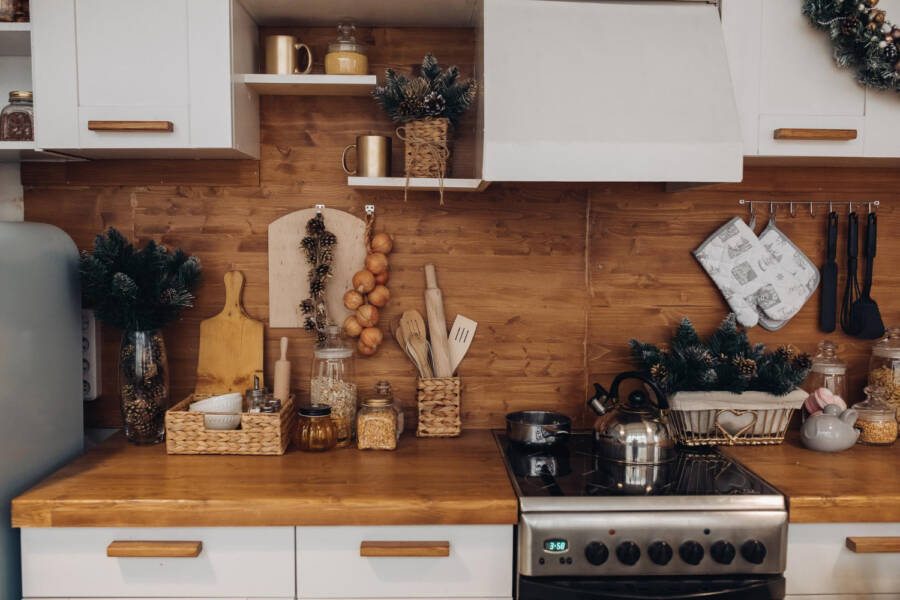
Contemporary
Even if some people might say contemporary cabinetry has its ancestors all the way back in Arts and Crafts or Mission styles, nowadays contemporary cabinets come all the way from midcentury styles, and have taken their present shape from all the new materials and manufacturing methods developed during the past 50 years.
As flat-panel cabinet styles can be seen as contemporary, not all flat panels are truly contemporary. In fact, those that are contemporary use sleek materials such as metal and melamine and also integrate hidden hardware and knob-free opening methods that can be easily grooved, lipped, and even channeled. High-gloss finishes are quite popular on these styles of cabinets.
Glass front
The vast majority of homeowners have quite a strong reaction to glass-front cabinets. In fact, they can either love the open look and always keep their dishware and other household items on display, or fear the visibility factor and the work needed to keep the contents of their cabinets nicely arranged.
For those with neat habits and a small galley kitchen, a bank of glass-fronted upper cabinets could make the tight space seem a bit fresher. Besides, the light bouncing off the glass fronts can also make the kitchen seem a lot brighter.
Glass-front cabinets are ideal for households with no little children, since there’s always the risk that the glass could ultimately break. They can also be more expensive than simpler cabinet options.
However, if you like the look and are totally open to curating the contents of your cabinets, you will be more than pleased to know that glass fronts are often available in semi-custom and even custom options from home improvement retailers.
Traditional kitchen cabinets
Solid wood construction, as well as intricate detailing, often characterizes traditional kitchen cabinet design, even if more affordable versions in MDF and laminate also exist. In fact, truly traditional cabinets could showcase the wood grain, even if they can also be painted, stained, or even glazed in a wide variety of fashionable or old-school hues.
Even if the most common style in this particular group is raised-panel, the overall category includes beadboard, cathedral, louvered, and rustic styles.
If you found this article useful, we also recommend checking: Fire Prevention: 6 Things to Keep an Eye Out For







